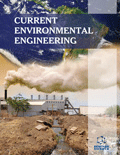Abstract
Background: Arsenic (As) harming is spreading all through the world where a large number of individuals are influenced by arsenicosis, and millions are possibly at danger, and this has prompted recharged enthusiasm for the issue of As all through the world. Arsenic (As) is found naturally in soil, water, rocks and air. It comes into the terrestrial and aquatic ecosystems through both the combination of natural activities such as weathering, volcanic eruptions, biological activity, and anthropogenic activities. Arsenic is a redox metal, which accumulates in different parts of plants and animals and causes toxic effects, instantly by injuries and rupturing the cell organization and by replacing the indispensable nutrients. Numerous physicochemical and biological procedures have been produced to expel arsenic from defiled environment. Phytoremediation has been recommended as a financially savvy strategy to tidy up defiled soils.
Methods: Many physiochemical and biological methods have been proposed for remediation of arsenic from the polluted environment. Phytoremediation shows a great potential for future development due to its ecofriendly nature and cost effectiveness. To improve this process, various techniques are recommended for enhanced phytoremediation.
Results: New strategies are required to upgrade phytoremediation effectiveness. Several techniques are used like abiotic (chelating agents, phosphorus, organic matter) and biotic (bacteria, mycorrihza) amendments to increase the phytoremediation potential of plants. Apart from this genetic engineering also plays an important role in increasing the phyotremedaition potential of plants.
Conclusion: Arsenic hyperaccumulators have received increased attention in recent years, due to the potential of these plants for phytoremediation of arsenic contaminated soils. This is an efficient and cost-effective technology for arsenic remediation. Biomass is considered as an important factor for phytoremediation which can be enhanced by biotic and abiotic amendments. Now days many researches are focusing on the physiological mechanisms of hyperaccumulation which will provide a better understanding to the mechanism of plants to detoxify arsenic stress. Genetic engineering technology can also be considered in increasing the accumulation capability of plants.
Keywords: Arsenic, arsenicosis, environment, heavy metals, phytoremediation, remediation.
Graphical Abstract
 9
9

